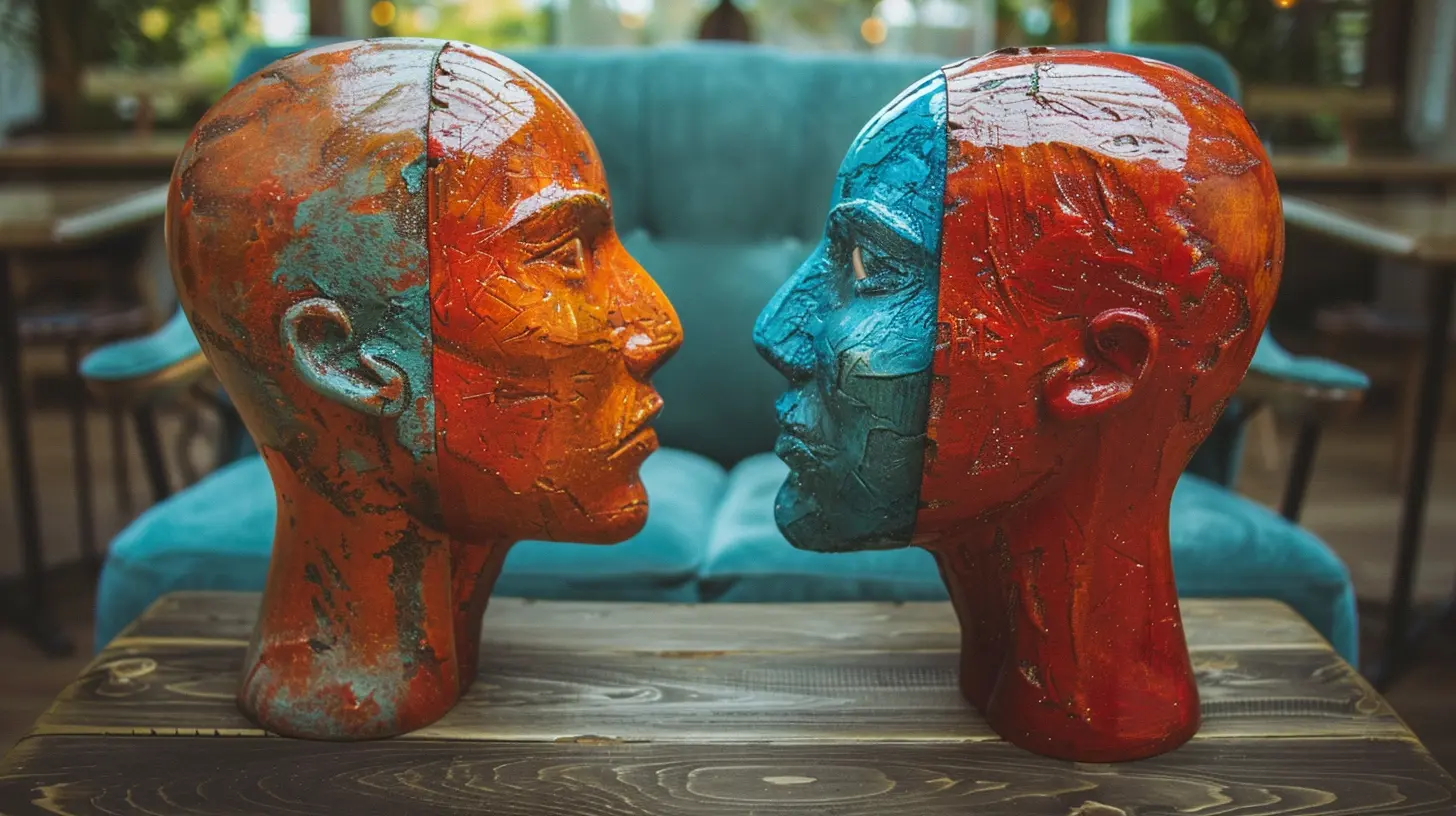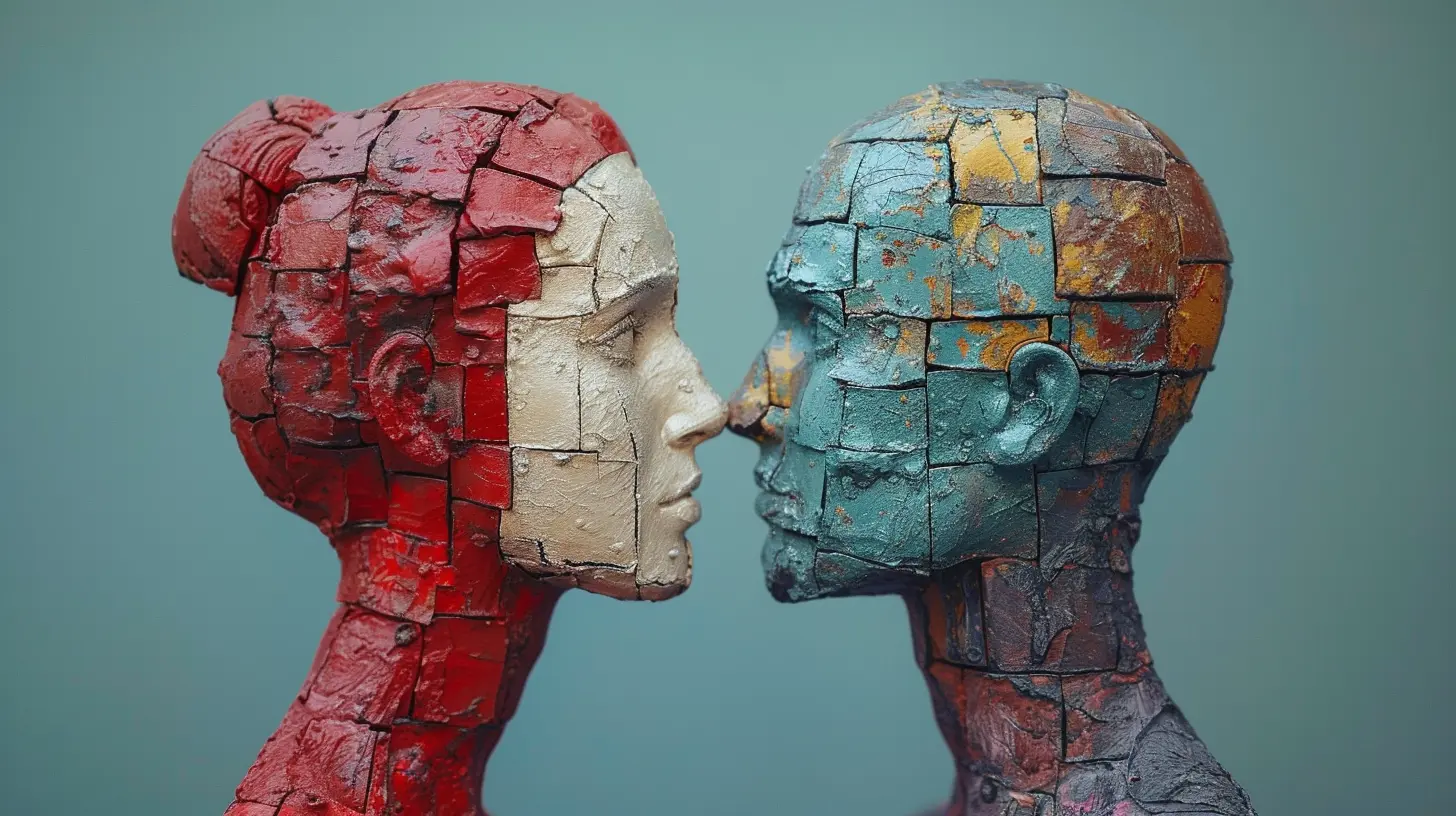Understanding Attachment Styles in Therapy
16 October 2025
So, you’ve finally decided to go to therapy. Yay, congratulations! You're now officially on the journey of unpacking all the emotional baggage you've been carrying around since you were in diapers. And guess what? The first thing your therapist might do is start talking about your "attachment style." Sounds cozy, right? Spoiler alert: it's about as cozy as realizing your favorite rom-com relationship is extremely toxic.
But don’t worry, we’re diving into all the juicy, awkward, and enlightening bits today. We’ll talk about what attachment styles are, why therapists are obsessed with them, and how yours might be the sneaky culprit behind your relationship drama, fear of commitment, or the urge to run when someone texts you “we need to talk.”

What the Heck Is an Attachment Style?
Alright, let’s strip this down to its psychological undies. An attachment style is basically the way you connect with others, especially in close relationships. It’s formed in childhood (thanks, parents!), and it affects how you give and receive love, trust, affection… yeah, all that vulnerable stuff.Therapists use these styles like a GPS for your emotional roadmap. Want to know why you ghost people after three dates or why you're still clinging to someone who hasn't texted back since the Obama administration? Attachment theory might just be your answer.

The Four Main Attachment Styles — AKA the Emotional Hogwarts Houses
Okay, psychology might not hand out magic wands, but each attachment style definitely comes with its own brand of wizardry (and chaos). Let’s meet the inner cast of characters:1. Secure Attachment — The Unicorn of Emotional Health
You’re chill. You’re emotionally available. You don’t freak out when your partner doesn’t reply for 10 minutes. Honestly, who raised you? Oprah?If you have a secure attachment style, you likely had caregivers who were consistently supportive, warm, and emotionally present. Now, as an adult, you’re able to form balanced relationships. You trust people. You expect love instead of betrayal. You communicate feelings instead of bottling them up.
Ugh, we’re both jealous and proud of you.
2. Anxious Attachment — The Overthinker's Paradise
If you’ve ever reread a text 73 times wondering if “lol” means they secretly hate you, welcome to Anxious Attachment 101.This style stems from caregivers who were inconsistent — sometimes loving, sometimes emotionally MIA. As a result, you grew up thinking, “If I don’t cling really hard, they might leave.” So now, you obsess over relationship dynamics, fear abandonment on a Tuesday afternoon for no reason, and may have a PhD in overanalyzing tone in text messages.
But hey, at least you're emotionally invested, right?
3. Avoidant Attachment — Aka "Feelings, What Feelings?"
If commitment feels like you’re being asked to adopt three cats and move in together after two dinners, you're probably rocking an avoidant attachment style.This comes from caregivers who were emotionally distant or dismissive. You learned early on that relying on others = disappointment. So now, you deal with stress by shutting down, ghosting, or pretending you’re totally fine while absolutely not being fine.
Feelings? What feelings? Let’s just bury them under a pile of unread emails and keep it moving.
4. Fearful-Avoidant (Disorganized) Attachment — The Whiplash Special
Ah yes, the emotional seesaw of chaos.This style is a combo platter of anxious and avoidant. You crave closeness but fear it. You want love, but don’t trust it. You get close, then panic and bolt. It's like driving a car with both the gas and brake pedals slammed down at the same time.
This typically comes from a history of trauma or abuse, where caregivers were both a source of love and fear. So, you’ve learned to expect inconsistency, confusion, and instability in relationships. And guess what? Therapy can help untangle that messy knot.

Why Therapists Care So Much About Your Attachment Style
You might be wondering, "Why does my therapist keep bringing up how my mom held me when I was a baby?" Great question.Therapists emphasize attachment styles because they form the blueprint for how you view yourself, others, and relationships. If you grew up feeling safe and supported, you’re more likely to believe you're lovable and others can be trusted. If not... well, let’s just say your relationship app history probably has a few horror stories.
Understanding your attachment style in therapy isn’t just some psychological trivia. It actually helps you figure out:
- Why you behave the way you do in relationships
- How to break toxic patterns
- How to foster more secure connections
Basically, it's emotional Google Maps. Recalculating route... again.

Attachment Styles in the Therapy Room
Here’s where things get real spicy. Once you’re in therapy, your attachment style doesn’t just sit quietly in the corner. Nope. It stomps around like it owns the place.You might form a bond with your therapist that’s eerily similar to your childhood relationships. This is actually a good thing (although occasionally super uncomfortable). It allows you to recreate those patterns in a safe space and — here’s the kicker — rewrite the script.
Transference: Your Brain’s Way of Saying “Déjà Vu!”
Ever found yourself annoyed with your therapist for no real reason? Or overly attached to them? That’s called transference. It’s your mind replaying old patterns with a new cast member. Your therapist becomes a stand-in for Mom, Dad, or that emotionally unavailable high school crush.This is where the healing happens, folks. Therapy provides a unique space where you can practice secure attachment — be seen, heard, validated — and not get ghosted.
Therapists as Attachment Figures — The Emotional Swiss Army Knives
Your therapist might become what psychologists call a "secure base" or "safe haven." Translation: someone who supports you emotionally, gently challenges you, and doesn’t run away when you cry about your ex for the fifteenth time.Over time, the therapy relationship itself helps you build new emotional patterns. Basically, it’s like emotional re-parenting — without the awkward family dinners.
Can You Change Your Attachment Style?
Short answer: Yes. Long answer: Yes, but it's going to take time, work, honesty, and probably a lot of ugly cries.Your attachment style isn’t a life sentence — it’s more like muscle memory. With consistent healthy relationships, insight, and support (aka therapy), you can shift toward secure attachment.
Some steps? Oh, we’ve got those:
1. Identify Your Style
If you’ve read this far and screamed “OMG, that’s me” more than once, congrats, you’ve already started. Knowing your style is like turning on the lights in a haunted house. It’s still creepy, but at least you can see where you’re going.2. Challenge Unhelpful Beliefs
Ask yourself: Do I believe I’m unlovable? Do I expect people to leave? Do I think vulnerability = weakness?Then challenge the heck out of those thoughts like a psychological WWE match.
3. Set Boundaries and Practice Vulnerability
It’s not just about avoiding toxic people (though, yes, do that), it’s also about learning to be emotionally honest and present. Vulnerability is the brave act of saying, “Hey, I care,” even if your attachment style is screaming, “ABORT MISSION!”4. Stay Consistent in Therapy
Therapy is where the magic happens. It’s the gym for your emotional muscles. Show up. Talk it out. Rant about your feelings. Accept the support even when you want to push it away.Relationships Are Not a "Fix Me" Project
One more thing while we're at it: your romantic partner is not your therapist. Or your parent. Or your emotional savior. Whew, someone needed to hear that.Attachment work means taking responsibility for your healing journey. It’s okay to need support, but placing your emotional well-being in someone else’s hands is like giving your house keys to a stranger hoping they'll renovate it. Spoiler: they won't.
Final Thoughts: You’re Not Broken, You’re Just Wired Differently
Hey, give yourself a break. Your attachment style is just your brain’s way of trying to protect you based on what it’s been through. You’re not broken. You’re human.Therapy doesn’t "fix" you — it helps you understand yourself so you can make different choices. And once you get the hang of this emotional rollercoaster, you might even enjoy the ride (bumps and all).
So whether you’re anxiously texting back, avoiding commitment like the plague, or teetering between wanting love and fearing it — you’re not alone. And with the right support (yes, therapy), you can rewire your patterns and start building the kind of relationships that feel like home... not like a battlefield.
all images in this post were generated using AI tools
Category:
PsychotherapyAuthor:

Matilda Whitley
Discussion
rate this article
1 comments
Solaria Kline
Attachment styles in therapy: where your inner toddler meets the wisdom of a therapy couch. Let the fun begin!
October 18, 2025 at 4:42 AM


